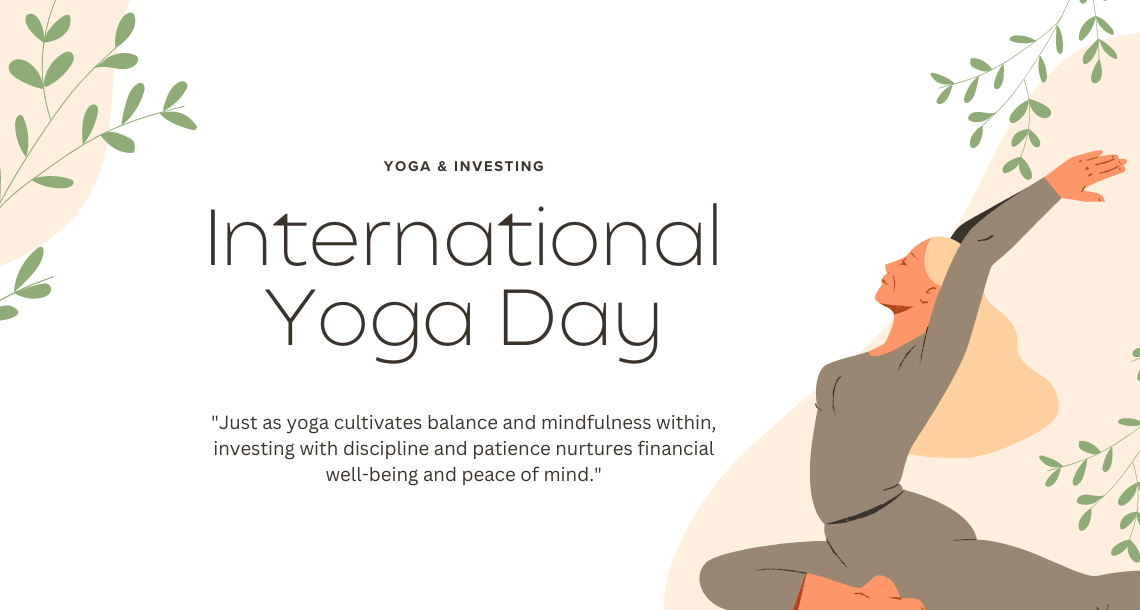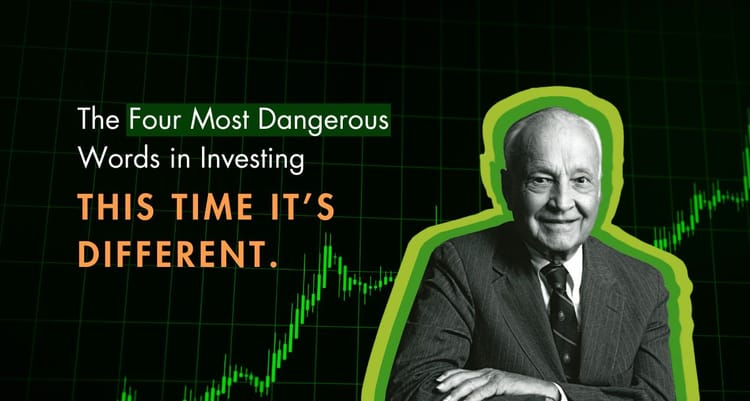Yoga and Investing: Finding Balance on International Yoga Day

Happy International Yoga Day! Today, we celebrate the ancient practice of yoga, which brings peace, balance, and strength to our minds and bodies. But did you know that the principles of yoga can also be applied to investing? Yes, the discipline and mindset cultivated through yoga can guide us toward better investment decisions. Let's explore how yoga and investing are more connected than you might think.
The Core Principles of Yoga and Investing
- Discipline and Consistency
- Yoga: Regular practice is key. Consistent effort, even if it's just a few minutes a day, builds strength and flexibility over time.
- Investing: Consistency is equally important. Regular contributions to your investment portfolio, no matter how small, can compound over time, leading to substantial growth.
- Patience and Long-Term Focus
- Yoga: Progress in yoga is often slow and steady. Mastering a difficult pose can take months or even years, requiring patience and perseverance.
- Investing: Successful investing is a long-term game. Market fluctuations are normal, but staying patient and focused on your long-term goals helps you ride out the ups and downs.
- Balance and Diversification
- Yoga: Yoga teaches balance in both body and mind. Balancing poses improve physical stability, while meditative practices bring mental equilibrium.
- Investing: Diversification is like balancing your investment poses. By spreading your investments across different asset classes (stocks, bonds, real estate), you reduce risk and create a more stable portfolio.
- Mindfulness and Informed Decisions
- Yoga: Mindfulness is at the heart of yoga. Being present and aware of your body and breath helps reduce stress and improve focus.
- Investing: Mindfulness in investing means making informed decisions. Researching and understanding where you put your money, staying calm during market volatility, and avoiding impulsive decisions are key to success.
Applying Yoga Techniques to Investing
- Set Clear Goals
- Yoga: Setting intentions at the start of a yoga session helps guide your practice and keep you focused.
- Investing: Define your financial goals clearly. Whether it's saving for retirement, buying a house, or building an emergency fund, having clear objectives will guide your investment strategy.
- Practice Regularly
- Yoga: Daily practice, even if it's short, maintains progress and builds habit.
- Investing: Regularly review and adjust your investment portfolio. Monthly or quarterly check-ins ensure your investments align with your goals and adapt to changing market conditions.
- Stay Informed and Educated
- Yoga: Learning new poses and techniques from experienced instructors can deepen your practice.
- Investing: Educate yourself about the market, investment strategies, and financial instruments. Books, courses, and financial advisors can provide valuable insights.
- Embrace Flexibility
- Yoga: Flexibility in yoga isn't just physical; it's about adapting your practice to how you feel each day.
- Investing: Be flexible with your investment strategies. As markets and personal circumstances change, being able to adapt your approach is crucial.
Common Misconceptions
- Yoga: Many people think you need to be flexible to start yoga, but flexibility is a result, not a prerequisite.
- Investing: Similarly, you don't need a lot of money to start investing. Begin with what you have, and let time and compounding work for you.
The Journey is the Reward
Both yoga and investing are journeys that require patience, discipline, and a willingness to learn and grow. Just as yoga brings balance and peace to our lives, a mindful and disciplined approach to investing can bring financial stability and peace of mind. On this International Yoga Day, let's embrace the lessons of yoga both on and off the mat, applying them to our financial lives for a more balanced, prosperous future.
Namaste and Happy Investing !
Frequently Asked Questions (FAQ)
1. How can the discipline from yoga practice be applied to investing?
Discipline in yoga involves regular practice, even if it’s just a few minutes a day. Similarly, in investing, consistency is key. Making regular contributions to your investment portfolio, no matter how small, can compound over time and lead to significant growth.
2. Why is patience important in both yoga and investing?
In yoga, progress is often slow and steady, requiring patience and perseverance to master difficult poses. In investing, successful strategies are long-term. Patience helps investors ride out market fluctuations and stay focused on their long-term goals.
3. How does balance play a role in yoga and investing?
Yoga teaches balance through physical stability and mental equilibrium. In investing, balance is achieved through diversification. Spreading investments across different asset classes reduces risk and creates a more stable portfolio.
4. What does mindfulness mean in the context of investing?
Mindfulness in yoga involves being present and aware, which reduces stress and improves focus. In investing, mindfulness means making informed decisions, staying calm during market volatility, and avoiding impulsive actions. Researching and understanding where you put your money is crucial.
5. How can setting clear goals in yoga help with investing?
Setting intentions in yoga guides your practice and keeps you focused. Similarly, defining your financial goals clearly helps guide your investment strategy. Whether it's saving for retirement, buying a house, or building an emergency fund, clear objectives are essential.
6. Why is regular practice important in both yoga and investing?
In yoga, daily practice maintains progress and builds habit. In investing, regularly reviewing and adjusting your portfolio ensures that your investments align with your goals and adapt to changing market conditions.
7. How can staying informed benefit both yoga and investing practices?
Learning new yoga poses and techniques from experienced instructors can deepen your practice. In investing, educating yourself about the market, investment strategies, and financial instruments through books, courses, and financial advisors can provide valuable insights.
8. What does flexibility mean in the context of investing?
Flexibility in yoga is about adapting your practice to how you feel each day. In investing, it means being open to adjusting your investment strategies as markets and personal circumstances change. Adaptability is crucial for long-term success.
9. What are common misconceptions about yoga and investing?
A common misconception about yoga is that you need to be flexible to start, but flexibility is a result of practice. In investing, a common misconception is that you need a lot of money to start. However, starting with what you have and letting time and compounding work for you is more important.
10. How can the journey in yoga and investing be rewarding?
Both yoga and investing are journeys that require patience, discipline, and a willingness to learn and grow. Just as yoga brings balance and peace to our lives, a mindful and disciplined approach to investing can bring financial stability and peace of mind.
11. How can I start applying yoga principles to my investment strategy?
You can start by:
- Setting clear financial goals.
- Practicing regular reviews and adjustments of your investment portfolio.
- Staying informed and educated about investment strategies.
- Embracing flexibility in your approach.
- Starting with small, consistent investments.
12. How can I start investing with Fynocrat?
To start investing with Fynocrat, you can plan your investments with us. We offer personalized investment strategies and professional guidance to help you achieve your financial goals by incorporating principles of discipline, balance, and mindfulness.






Member discussion